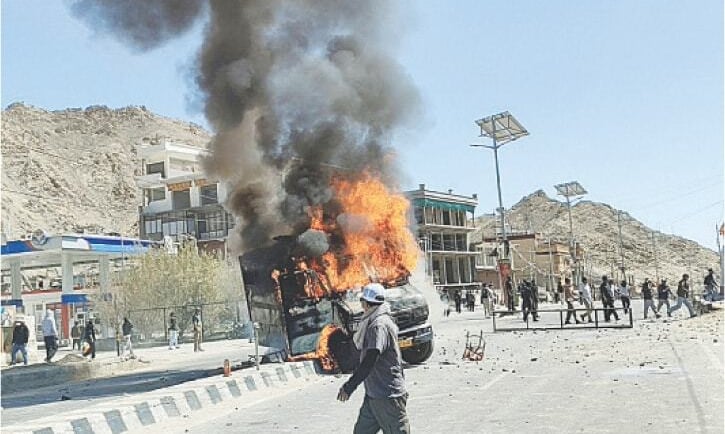GLOBISCOPES
Ladakh Protests Turn Deadly: 4 Killed as Calls for Autonomy and Land Rights Intensify
Leh, Ladakh – The Himalayan region of Ladakh has plunged into unrest after four people were killed during violent demonstrations demanding greater political autonomy and protection of local land rights. The protests erupted on Wednesday in Leh, where angry crowds set fire to a police vehicle and offices of Prime Minister Narendra Modi’s Bharatiya Janata Party (BJP). Authorities initially reported five deaths but later confirmed the toll as four. Why Are Ladakhis Protesting? Discontent has been brewing since 2019, when Modi’s government revoked the special status of Jammu and Kashmir and carved Ladakh into a separate union territory under direct federal rule. Local residents argue that the move stripped them of crucial safeguards over land, jobs, and cultural identity. “All the protections we enjoyed under Jammu and Kashmir disappeared overnight,” explained lawyer Mustafa Haji, noting that decisions on development are now made in New Delhi, sidelining the local elected council. Who Is Leading the Movement? The Apex Body Leh, headed by veteran leader Chering Dorjay, has become the central voice of the movement. Dorjay, 77, accused the government of treating Ladakhis “like slaves” and pledged to continue the struggle until autonomy is granted. The protests also gained momentum in solidarity with renowned climate activist Sonam Wangchuk, who had been on a two-week hunger strike before being detained by police. Officials in Delhi allege that Wangchuk’s “provocative speeches” fueled the unrest. What Do Protesters Want? The protesters’ demands focus on three main issues: Constitutional autonomy under the Sixth Schedule of India’s constitution, giving locals the power to make laws on land, jobs, and cultural preservation. Land protections to prevent outsiders from purchasing property in Ladakh. Safeguards for livelihoods, particularly grazing rights for pashmina goat herders. Though some concessions have been made—such as reserving 85% of government jobs for locals and freezing outside domicile rights until 2036—leaders say these are only partial victories. Why Is Land Such a Flashpoint? The Indian government has announced ambitious solar energy and industrial projects in Ladakh, requiring vast tracts of land. Locals fear these initiatives will disrupt fragile grazing grounds vital for the centuries-old pashmina goat herding economy, already threatened by climate change and military buffer zones set up along the disputed border with China. “The loss of grazing pastures will devastate thousands of families who rely on pashmina wool,” Dorjay warned. Shifting Sentiments Towards India Historically, Ladakhis supported India’s military presence, helping secure its frontiers with both Pakistan and China. But many now say they feel abandoned. “For decades, we defended India’s borders,” said lawyer Haji. “Now we ask the same protection for our land, culture, and identity.” The unrest highlights the growing strain between New Delhi and Ladakh’s 300,000 residents—half of whom are Muslim and around 40% Buddhist—raising fears that tensions in this strategically sensitive region could escalate further.
WORLD
Globiscopes
9/30/20251 min read


My post content
Globiscopes news 2025
Globiscopes news empowers the generation of tomorrow for a brighter future and hope for every individual.
inbox
Subscribe to our newsletter and never miss a story.
We care about your data in our privacy policy.
